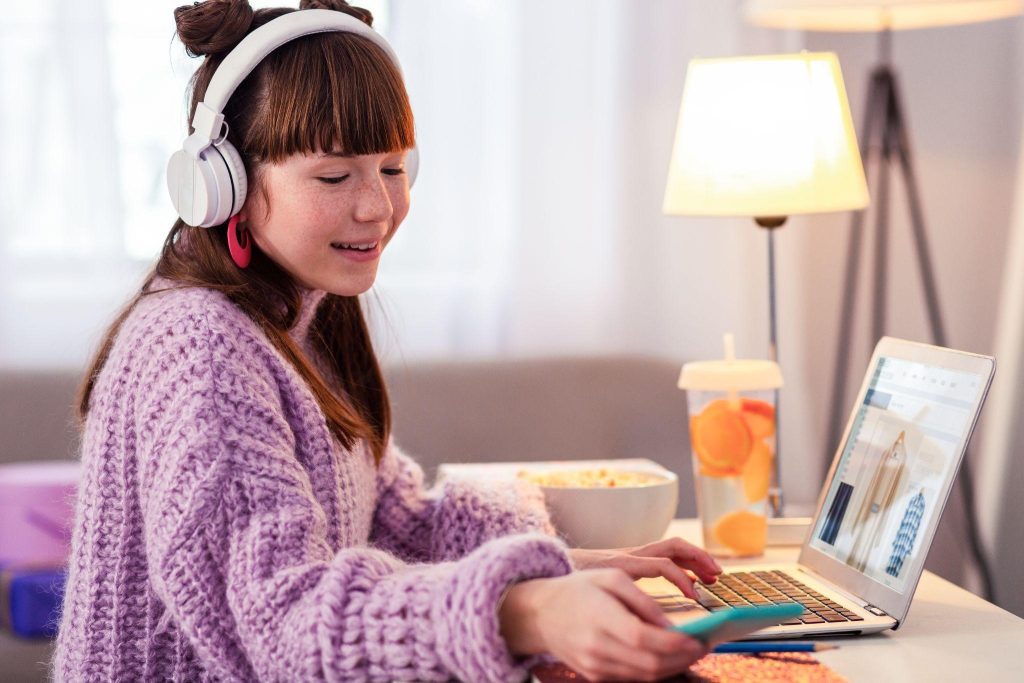USE OF SOCIAL MEDIA FOR TEENAGE EMPOWERMENT

- SENSE OF BELONGING & COMMUNITY:
Social media acts as a support network for teenagers by connecting them with peers who share similar experiences in life, creating a sense of belonging and reducing isolation.
Social media promotes social awareness, encouraging teens to participate in social causes and develop a sense of community building. A trustworthy digital platform provides endless networking opportunities and encourages people to engage. Engagement in online creative activities helps create a sense of collaboration and teamwork at a young age, which favors empowerment.
- FACILITATING FRIENDSHIPS:
Teenagers benefit from making friends through social media because it allows them to connect with a broader range of people, ease cultural exchange, and facilitate peer relationships based on shared interests. It encourages anonymous peer support, as many young people are comfortable sharing their struggles online in support groups. Support from people vouching for the same struggles can foster confidence in a person. It serves as a safe space for communication and lessens social anxiety.
- POSITIVE INFLUENCERS & MENTORS:
Positive role models and influencers have the potential to inspire adolescents by showcasing admirable traits. These figures can provide invaluable support in coping with challenges, such as facing criticism and building resilience, teaching teens that setbacks are only stepping stones to growth.
Various platforms have emerged as vital resources, featuring seasoned professionals who offer advice, coaching, and mentorship. They guide young individuals to discover websites and online platforms brimming with essential information about the knowledge of entrepreneurship that might otherwise remain out of reach.
- ONLINE MENTAL HEALTH AWARENESS:
A 2022 study concludes that social media can be a valuable tool for educating and reaching adolescents to promote mental health awareness. While adolescents are more vulnerable to the risks and challenges associated with digital platforms, low and excessive social media use is associated with decreased well-being. In contrast, moderate use is linked to improved well-being.
Indeed, healthcare workers and education providers need to utilize these platforms to educate people actively. Furthermore, actively engaging educational institutions in digital platforms can ensure the trustworthiness of educational resources and adult supervision.
A WORD FROM MENTAL NURTURING:
Social media is often not considered a healthy choice, making it challenging to elaborate on growth and wellness through digital platforms. Many studies highlight how excessive social media use can contribute to poor mental health through validation-seeking practices, fear of judgment, body comparison, and cyberbullying. Studies also demonstrate social media's positive impact on adolescent well-being through connection, mentorship, and support on discussion forums.
After considering the good, bad, and ugly sides, it is concluded that the effects differ depending on the type of use: moderate, mindful, and often supervised use of digital platforms is an excellent source of productivity and growth. Procrastination and passive use are related to adverse impacts, while social and productive uses have positive effects.
Positive role models have tremendous scope and value in the lives of young people. They are in a position to inspire young minds, help them develop communication skills, and equip them with digital tools for creativity and innovation.
RESOURCES:
1. Dienlin T, Johannes N. The impact of digital technology use on adolescent well-being
. Dialogues Clin Neurosci. 2020 Jun;22(2):135-142. doi: 10.31887/DCNS.2020.22.2/tdienlin. PMID: 32699513; PMCID: PMC7366938.
2. Cauberghe V, Van Wesenbeeck I, De Jans S, Hudders L, Ponnet K. How Adolescents Use Social Media to Cope with Feelings of Loneliness and Anxiety During COVID-19 Lockdown. Cyberpsychol Behav Soc Netw. 2021 Apr;24(4):250-257. doi: 10.1089/cyber.2020.0478. Epub 2020 Oct 20. PMID: 33185488.
3. O'Reilly M. Social media and adolescent mental health: the good, the bad and the ugly. J Ment Health. 2020 Apr;29(2):200-206. doi: 10.1080/09638237.2020.1714007. Epub 2020 Jan 28. PMID: 31989847.
4. O'Reilly M, Dogra N, Hughes J, Reilly P, George R, Whiteman N. Potential of social media in promoting mental health in adolescents. Health Promot Int. 2019 Oct 1;34(5):981-991. doi: 10.1093/heapro/day056. PMID: 30060043; PMCID: PMC6904320.

Written by:
Hooria Jannat Javed,
Medically reviewed by:
Dr.Saba Munir, MBBS
On January 16, 2025

